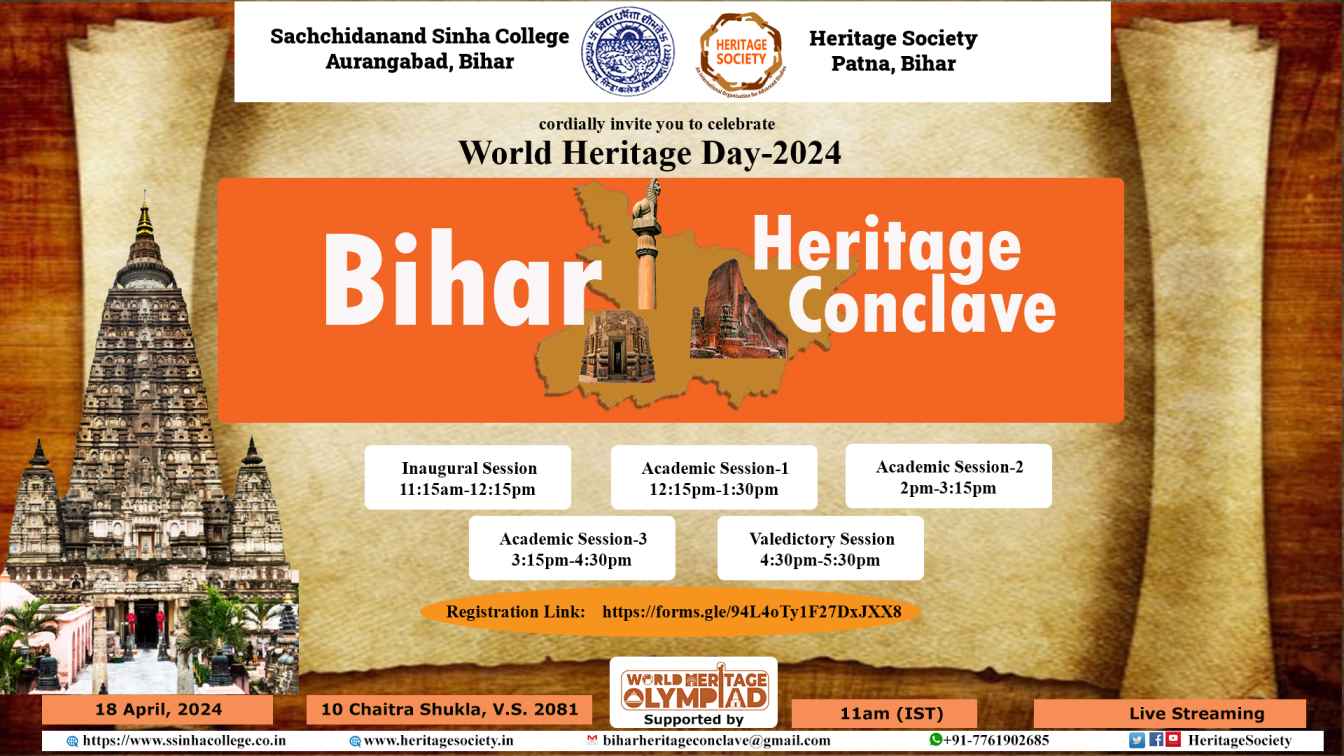Archaeological Exploration and Excavation Department, Heritage Society, India, is conducting an International Workshop on the theme of "Temple Architecture of Ancient India" from 1st February to 22nd February 2022. Eminent archaeologists, art historians, historians, educationists, academicians, and other paramount resource people will be joining to provide valuable information regarding the course.
During ancient India, high-quality temple architecture flourished in practically every area. Substantial features from geographical,ethnic, historical, to linguistic differences all contributed to the varied architectural styles of temple development in different areas of the sub-continent. There are three main forms of architectural style among ancient Indian temples. This categorization is based on the locations and then ruling kingdoms in terms of temple building.
The Nagara, or Northern style, the Dravida, or Southern style, and the Vesara, or Mixed style, are the three primary styles of temple architecture. However, there are certain regional styles from Bengal, Kerala, and the Himalayan regions. The temples of North and South India were first characterised by distinct traits such as Shikhara and gateways. The Shikhara remained the most conspicuous feature of north Indian temples, while the gateways were typically modest. Enclosures surrounding temples and Gopurams (huge gateways) were the most notable elements of South Indian temples.
The pursuits for Artha, Kama, Dharma, and Moksha, according to Indian philosophy, are the four important principles that also serve as the goals of human existence. Hindu temples show and venerate such philosophies with its scientifically organised areas, exquisite artworks, adorned and carved pillars and sculptures. A Hindu temple's plan follows a geometrical pattern known as Vastu-Purusha-Mandala, whose name is derived from the three core components of the design: Vastu, which means "place of living," Purusha, which means "universal principle," and Mandala, which means "circle."
The International Workshop on “Temple Architecture of Ancient India” will focus on how more platforms were produced as temples became more intricate.With addition of more and more dynamically protruding, and symmetrical walls and niches, the main aim remained same as innot deviating from the shrine's basic form. The course aims at seeking to explore the social, cultural, and historical significance of the temple architecture of ancient India. The participants will be given access to all the video recordings of the classes held for several months. They can access and study whenever required.
It will provide the trainees with a clear understanding of the different aspects of regional temple architecture too. This course is articulately designed for learners of all age group, coming from different backgrounds and especially for those who would delve into deeper understanding, academically. This course is also a specialization for those who appearing for civil services, UGC NET and University exams. As the aspirants are needed to study the temple architecture of ancient India with focus on important facts related to each form.
Registration Form : https://forms.gle/WFvxvtJLH9E4etMi9
For more information participants may contact on email outreahprogram.hs@gmail.com or whatsapp number : +91-7761902685 .
Last date of registration: 24 January, 2022
Note: Limited Seats







